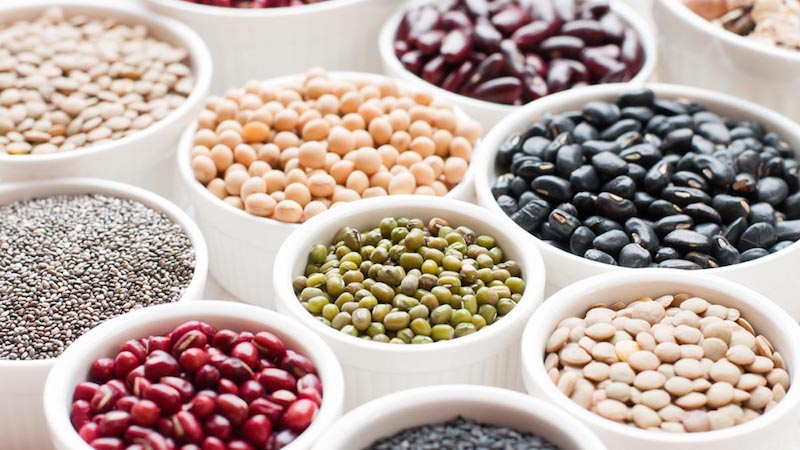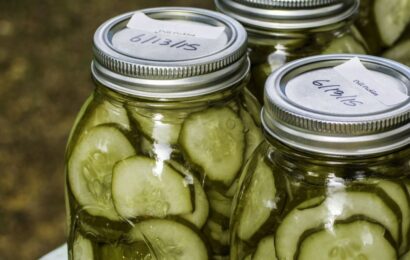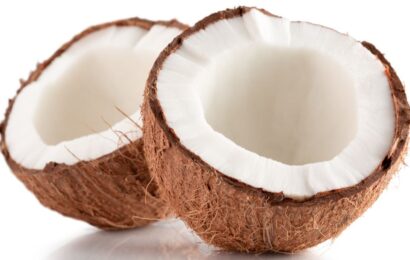Beans are a food that generally don’t get much respect compared to other foods. But they’ve quietly risen to superfood status, thanks to their nutrition profile, low cost and beneficial environmental impact. There is also plenty of research showcasing beans’ positive effects on many aspects of health. However, you might be wondering if and how beans can be part of your eating plan if you have diabetes. Are beans good or bad for blood sugars? Let’s take a look.
What are beans?
Take a peek in your cupboard or pantry — you might have a few cans of kidney beans or chickpeas tucked away. Beans have a history of being somewhat low on the food chain, and often regarded as being peasant food. They were used for food dating back 9,000 years ago. But throughout history, beans were considered to have special powers. In fact, the ancient Egyptians left beans in tombs as food for the deceased and their souls in the afterlife. Beans are now a part of every culture and the United states is the “global leader in dry bean production,” according to The Bean Institute. Farmers in the U.S. plant between 1.5 and 1.7 million acres of dry beans every year.
Beans belong to the legume family, which includes peas and lentils. They’re also called “pulses,” the “edible seeds of plants in the legume family,” according to the website aptly named Pulses. Beans are the seeds from different types of plants.
A common question is, are green beans basically “beans,” such as black beans and kidney beans? By definition, no. Green beans are in a pod, so they are legumes, not beans. Somewhat confusing, we know. For the purposes of this article, though, the focus is on beans that are legumes and not in a pod.
Types of beans
There are hundreds of varieties of beans — too numerous to list! Certain types are more common or popular in different regions of the world. Here are some examples:
Adzuki
A small, round red bean with a white seam along the side. Grown throughout Asia.
Black bean
Native to South and Central America with a creamy texture.
Cannellini (white kidney bean)
Native to Argentina but very popular in Italy. Has a creamy texture and nutty flavor.
Fava bean (broad bean)
Native to the Mediterranean region, this bean grows in pods and can be eaten raw or cooked. They’re green in color and have a mild, nutty flavor.
Garbanzo (chickpea)
This round, tan bean originated in the Middle East. Has a mild, nutty flavor.
Kidney bean
A kidney-shaped bean with a dark red color and a mild flavor.
Mung
Native to India and Pakistan; a small, round bean that is green with a white stripe.
Pinto
Native to South America; pink and brown in color with a slightly sweet, mild flavor.
Popular bean dishes
You might not be excited at the thought of eating beans, but chances are you’ve had (and enjoyed) dishes that feature beans, including:
- Black bean soup
- Boston baked beans
- Hummus
- Refried beans
- Tuscan bean soup
- Navy bean soup
- Minestrone soup
- Red beans and rice
- Chili
- Cassoulet
Beans have grown in popularity and are a staple of vegetarian and vegan eating plans. You can find recipes that use beans in less “traditional” ways, too — black bean brownies, tortilla chips, bean smoothies, and Bolognese sauce made with beans instead of ground beef are a few examples. Peruse the cereal aisle of your grocery store and don’t be surprised to see that some cereals are made with — you guessed it — beans! Check out Love Grown Power O’s, which happen to be gluten-free, as well.
To get cutting-edge diabetes news, strategies for blood glucose management, nutrition tips, healthy recipes, and more delivered straight to your inbox, sign up for our free newsletters!
Bean nutrition
Beans taste truly delicious, but where they REALLY shine is in their nutrition. Let’s break down what these legumes have to offer:
Complex carbohydrate
Before you get worried that beans are off limits for people with diabetes, realize that the kind of carb found in beans are a combination of starch, resistant starch, nonstarch polysaccharides, and complex sugars called oligosaccharides. These various carbs have a low glycemic index (meaning, they are less likely to cause blood sugar spikes) and they are beneficial for gut health.
Dietary fiber
Beans have both soluble and insoluble fiber. Soluble fiber helps lower cholesterol and blood sugars. Insoluble fiber helps prevent constipation, colon cancer and other digestive disorders.
Protein
Protein is a hot topic for people with diabetes, as it can help keep you feeling fuller for longer and may slow the digestion of carbohydrate. Beans contain between 21% to 25% protein by weight, according to The Bean Institute. For this reason, they’re often used as a meat substitute.
Vitamins and minerals
Most beans provide potassium, which helps promote healthy blood pressure, magnesium, copper, iron, vitamin B6, riboflavin, thiamin, and folic acid.
In terms of beans’ nutrition profile, here’s the breakdown, listed as a range, for some of the more common beans that we tend to eat.
Per 1/2 cup serving:
- Calories: 110–125
- Carb: 19–24 grams
- Fiber: 5–10 grams
- Protein: 6–9 grams
- Fat: 0.2–0.6 grams
- Sodium: 0–5 milligrams*
- Potassium: 305–502 milligrams
*Note that canned beans that have not been rinsed will contain more sodium.
Beans and diabetes
As previously mentioned, beans are a good choice for people who have diabetes. One of the key benefits of beans is their soluble fiber. Studies show that including foods that contain soluble fiber in your eating plan can help lower blood sugars and A1C levels. A study in the October 22, 2012, Archives of Internal Medicine looked at subjects with type 2 diabetes who ate a cup of beans or lentils every day as part of a low-glycemic index diet. After three months, their A1C levels had dropped by half a percentage point. Another study in the journal Diabetes Care showed that soluble fiber lowered A1C levels by about 0.6%.
How does soluble fiber actually work? Soluble fiber (which is also called viscous fiber) forms a gel in the digestive tract. The gel then slows the digestion of carbohydrate, which slows the absorption of glucose. End result? Lower blood sugars and A1C levels! Other foods that contain soluble fiber include oats, apples, carrots, and barley.
Speaking of soluble fiber, including beans as part of your eating plan can also get your LDL (“bad”) cholesterol down. Soluble fiber binds to cholesterol in the small intestine, preventing it from being absorbed into the bloodstream. The cholesterol is then excreted.
If one of your goals is to lose some weight (which can coincidentally help your blood sugars and heart health), beans can help! Their high fiber and protein content work to curb your appetite and keep you feeling full so that you eat less.
But what about all that carb in beans, you might be asking? It’s a great question, and yes, beans do contain carbs. A serving of beans for carb counting purposes is 1/2 cup (1/3 cup for baked beans) and that’s “counted” as one carb choice plus one lean protein choice. Note that 1/2 cup of beans “provides as much protein as an ounce of meat without the saturated fat,” according to the American Diabetes Association. Checking your blood sugars with a meter or using CGM (continuous glucose monitoring) are excellent tools for helping you learn how beans — and other foods, too — impact your glucose levels.
Tips
If all of this talk about beans has your mouth watering, great! Here are some tips to keep in mind:
- If you’re not used to eating much fiber, go easy with the beans. Increase your intake slowly to limit bloating and gassiness.
- Canned beans are super convenient and easy on the budget. The downside is that they can be high in sodium. Look for no-salt-added beans or rinse them thoroughly before you eat them.
- You can also use dried beans. They will need to be soaked for at least eight hours or overnight. You’ll then need to cook them for 45 minutes to 2 hours. Check out instructions here.
- Using an Instant Pot will save you a lot of time when preparing and cooking beans. You can do a quick soak in the pot for one minute, and then cook them (the time will vary based on the type of bean you use). Learn how here.
- If you don’t eat eggs, the liquid in canned beans, called aquafaba, can be used as a substitute for eggs in baked goods: 3 tablespoons of aquafaba are the equivalent of one egg. Also, try whipping aquafaba into stiff peaks – you’ll get meringue without the egg whites!
- There are a lot of ways to add more beans to your diet. Include them in any soups or stews that you make. Sprinkle them into salads. Mixed cooked beans into ground meat when making burgers or meatballs. Speaking of soup, give this mouthwatering cannellini bean soup recipe a try.
Want to learn more about beans? Read “The Health Benefits of White Beans” and “The Health Benefits of Beans.”





